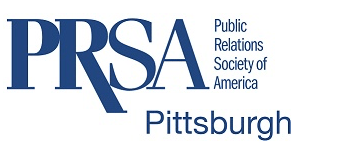Identify Without Discrimination: The Importance of Being Included
by Charlene Payne, PRSA Pittsburgh diversity & inclusion chair
June celebrated Lesbian, Gay, Bisexual, Transgender, and Queer (LGBTQ+) populations across the United States. It was a time to reflect on the laws that were passed to protect the LGBTQ+ community and their rights to serve in the military, adopt children, and legally marrying the same sex. June was also a time to remember the Stonewall Uprising of 1969, the event that inspired the gay rights movement in New York City and cities around the world.
The United States Equal Employment Opportunity Commission’s Civil Rights Act of 1964 Title VII “prohibits employment discrimination based on race, color, religion, sex and national origin.” As we work incessantly to keep race and color in the forefront of our daily watch, sexual identity is equally important. The U.S. adult population that identifies with being LGBTQ+ has doubled over the past decade, with a possibility of increasing by 10% in the near future.
Ensuring the LGBTQ+ community has a seat at the table
Through a recent webinar by the Federation of Associations in Brain and Behavioral Science regarding LGBTQ+ and Multiracial Demographics in WMPD, the research shared that not identifying the Lesbian, Gay, Bisexual, Transgender, and Queer community members hurts scientific and technological progress. The presentation stated Asians (5.3%), American Indians and Alaskans (0.7%) and the Native Hawaiian and Pacific (0.2%) populations smaller in number than the LGBTQ+ group (5.6%), but are numerically counted in industry-related surveys. It’s important to be counted here and on a larger scale so that the LGBTQ+ community can be supported, promoted, recruited and retained as a student, employee, or social contributor.
The United Nations Department of Economic and Social Affairs says,
“Since ancient times, governments around the world have counted their populations. By counting everyone, communities can determine the needs of their people;
where to build homes, schools, hospitals and where to invest in food supply, jobs and transportation. In this way, societies can progress.”
The LGBTQ+ community faces discrimination academically, professionally, and in social arenas. Discrimination is prominent across generations and results in breakdowns financially, mentally and physically. Adding an underrepresented group, like race, adds another layer of distress, disappointment and misappropriation.
Discrimination compromises our present and future. The recent passing of the Equality Act (2021) has placed emphasis and expanded civil rights for the LGBTQ+ community. I look forward to a world where we can bring our experiences and knowledge to the table, progressing society as one human resource.
The importance of inclusion to the PR professional
Using inclusive language is important to PR professionals for language is how we inform, frame and respond to messages. I think inclusion has always been important to humans. We want to be on the team at all stages of life, including adulthood.
However, when teams become homogeneous, repeatedly hiring the same type of person, they miss the opportunity to learn about different experiences and perspectives, allowing for enhanced creativity, innovation and problem-solving. Keep in mind, difference is where the sweet spot is – be sure to include it.
Share our commitment to workplace inclusion
PRSA Pittsburgh encourages its members to access its Diversity & Inclusion Toolkit for more information on ways to cultivate diversity and inclusion in the workplace.
As part of this toolkit, we encourage you to take our D&I pledge to advance diversity and inclusion in the communications and PR profession. We also encourage members to print out and share the pledge (PDF) with their colleagues and peers who may not have access to technology.
After taking the pledge, we hope employers spark hard conversations in their workplaces and begin to build a more diverse and inclusive environment, ultimately earning deeper trust and more commitment from their employees.





Leave a Reply
Want to join the discussion?Feel free to contribute!